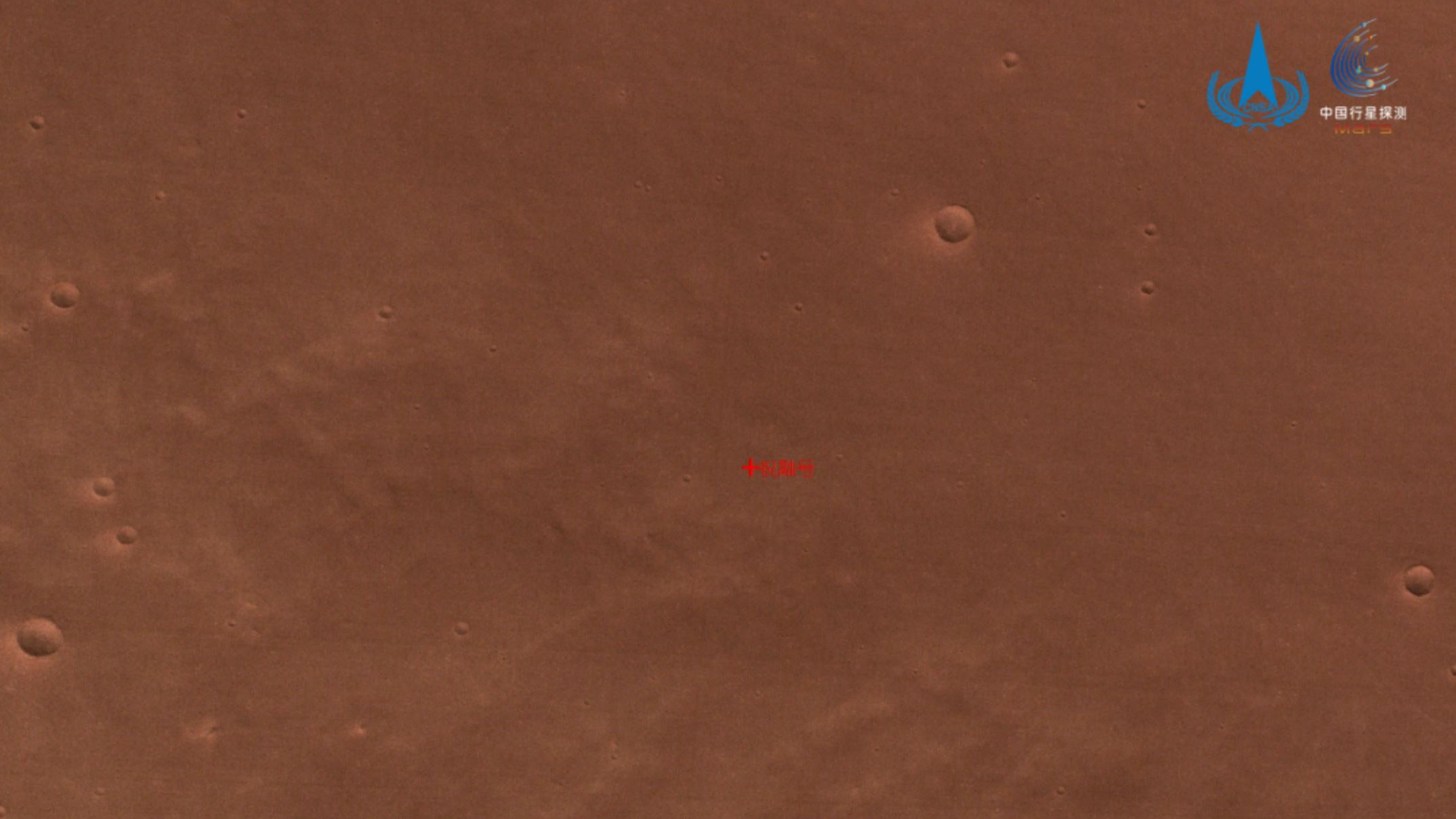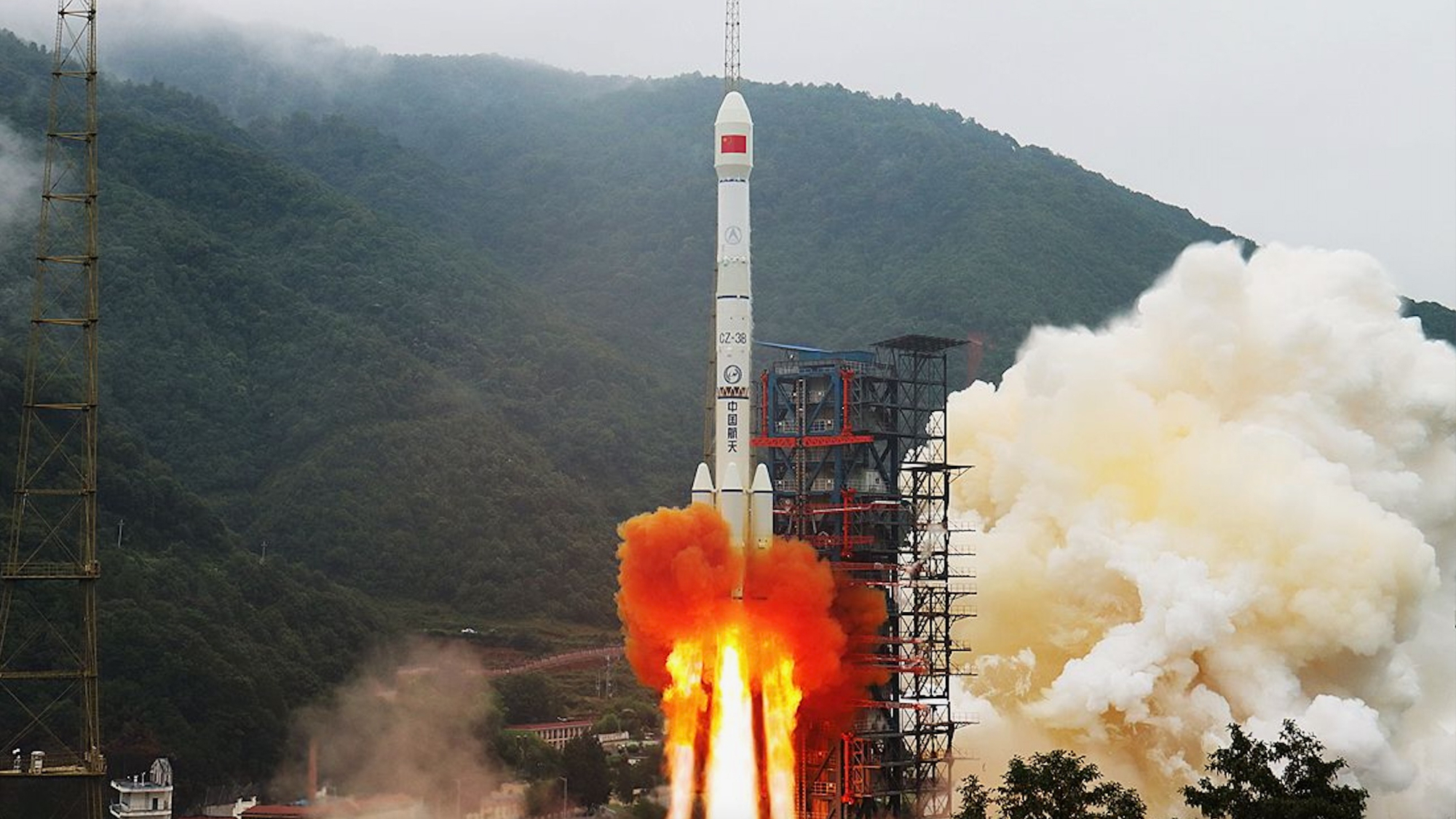Will China's Zhurong Mars rover wake up from its worrying hibernation?
There's still reason for hope, according to mission team members.

China's Zhurong Mars rover remains silent despite being expected to wake up in December — but there's still hope that the vehicle could rise from its slumber.
Zhurong is part of Tianwen 1, China's first interplanetary mission, which also includes a Mars orbiter. The rover touched down on the Red Planet's Utopia Planitia back in May 2021 and conducted a range of science and exploration activities before entering a dormant state in May 2022 to wait out the cold, harsh winter in the northern hemisphere of Mars.
Zhurong was expected to wake up in December, around the time of the Mars spring equinox. So far, however, there has been silence from both the rover and its operators in China, with reports that the spacecraft could be in trouble.
Related: China's 1st Mars rover and Tianwen 1 orbiter may have gone silent
Yet hope remains that Zhurong is simply experiencing colder than expected conditions and may still wake itself up and resume activities.
Jia Yang, a Tianwen 1 mission deputy chief designer, told reporters in September 2022 that Zhurong would wake up autonomously when two conditions are met. These are a temperature of greater than 5 degrees Fahrenheit (minus 15 degrees Celsius) and energy generation of greater than 140 watts.
Weather data from NASA's Perseverance rover — which is nuclear-powered and has not needed to hibernate — reveals that temperatures in Mars' Jezero Crater have only briefly risen higher than this lowest heat requirement. Perseverance is also some seven degrees latitude south of Zhurong and thus closer to the Martian equator, meaning it may also be experiencing slightly more favorable conditions than China's rover.
Breaking space news, the latest updates on rocket launches, skywatching events and more!

The other factor affecting Zhurong is that dust storms may have deposited Martian sand onto Zhurong's solar arrays, hindering its ability to generate power and wake itself up. The rover's butterfly-shaped solar panels use anti-dust material, and Zhurong is equipped with a vibrating function to shake off accumulated dust. However, the rover will need to be active to employ this latter measure.
Time will tell if Zhurong will roll along the Martian surface once more, but the mission has already been a huge success. The landing made China the second country to successfully operate a rover on Mars after the U.S., and both Zhurong and the Tianwen 1 orbiter have completed their primary missions.
Follow us on Twitter @Spacedotcom and on Facebook.
Join our Space Forums to keep talking space on the latest missions, night sky and more! And if you have a news tip, correction or comment, let us know at: community@space.com.

Andrew is a freelance space journalist with a focus on reporting on China's rapidly growing space sector. He began writing for Space.com in 2019 and writes for SpaceNews, IEEE Spectrum, National Geographic, Sky & Telescope, New Scientist and others. Andrew first caught the space bug when, as a youngster, he saw Voyager images of other worlds in our solar system for the first time. Away from space, Andrew enjoys trail running in the forests of Finland. You can follow him on Twitter @AJ_FI.
